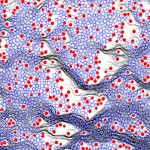Dr. Charles Reichhardt – Jamming and Clogging Transitions for Systems with Quenched Disorder
CONFERINTA
7 Martie 2013, ora 16:00
Amfiteatrul Augustin Maior (Cladirea principala UBB)
Jamming and Clogging Transitions for Systems with Quenched Disorder
Speaker
Dr. Charles Reichhardt
Theoretical Division, Los Alamos National Laboratory, Los Alamos, USA
Abstract
 Jamming can occur in systems consisting of collections of particles when the response of the system changes from a fluid like state that can easily flow to a state that acts like a solid. For a loose collection of grains or colloids, jamming can occur as a function of density, where at low densities the grains readily flow but as the density increases there is a transition to a jammed state at point J. Liu and Nagel have proposed that there may be a universal jamming phase diagram as a function of density, load, or temperature [1] which may also include the glass transition. Here we propose that the density of fixed obstacles or quenched disorder can be considered a new axis for the jamming phase diagram, since the disorder causes the system to jam at densities below the density of point J. For a small number of obstacles, the system exhibits jamming behavior; however, for higher disorder density there is a crossover to a behavior which we term clogging rather than jamming since the stuck states are highly heterogeneous, are fragile, and exhibit memory effects. Our results imply that clogging is a distinct phenomenon from jamming with very different behaviors. These results are of relevance for particle flow in porous media, depinning transitions, and jamming in crowded environments. I will also briefly cover other systems beyond granular matter that we have been studying in the presence of quenched disorder that exhibit jamming or clogging behaviors, including vortices in type-II superconductors, active matter such as swarming bacteria, and dislocation
Jamming can occur in systems consisting of collections of particles when the response of the system changes from a fluid like state that can easily flow to a state that acts like a solid. For a loose collection of grains or colloids, jamming can occur as a function of density, where at low densities the grains readily flow but as the density increases there is a transition to a jammed state at point J. Liu and Nagel have proposed that there may be a universal jamming phase diagram as a function of density, load, or temperature [1] which may also include the glass transition. Here we propose that the density of fixed obstacles or quenched disorder can be considered a new axis for the jamming phase diagram, since the disorder causes the system to jam at densities below the density of point J. For a small number of obstacles, the system exhibits jamming behavior; however, for higher disorder density there is a crossover to a behavior which we term clogging rather than jamming since the stuck states are highly heterogeneous, are fragile, and exhibit memory effects. Our results imply that clogging is a distinct phenomenon from jamming with very different behaviors. These results are of relevance for particle flow in porous media, depinning transitions, and jamming in crowded environments. I will also briefly cover other systems beyond granular matter that we have been studying in the presence of quenched disorder that exhibit jamming or clogging behaviors, including vortices in type-II superconductors, active matter such as swarming bacteria, and dislocation
pileup formation in materials.
[1] A.J. Liu and S.R. Nagel, Nature 396, 21 (1998).















